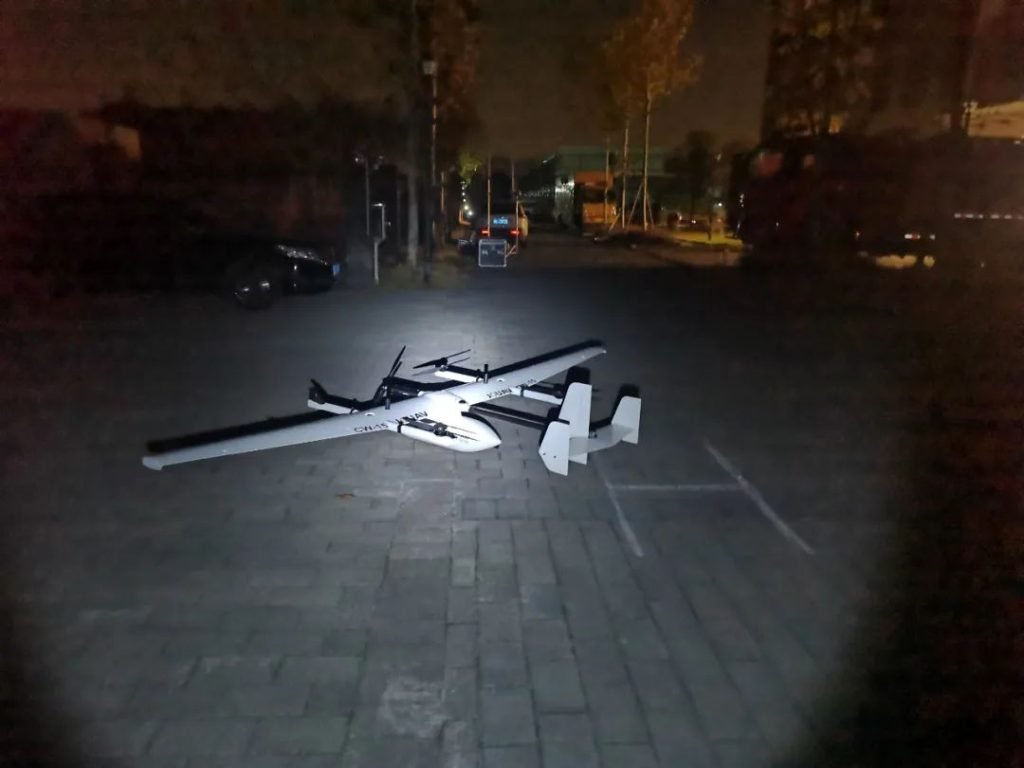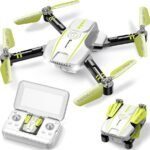Overview of Traditional Firefighting Methods
Traditional firefighting methods have served as the backbone of emergency response for many decades. Firefighters have relied on tried-and-true techniques to combat blazes, using tools and strategies that have evolved over time but largely maintain a core focus of ground-based combat. Let’s take a look at some of these methods:
- Fire Engines and Trucks: Equipped with water hoses, ladders, and various firefighting tools, these vehicles are essential for any firefighting effort. Fire engines are designed to transport personnel and gear swiftly to the scene of a blaze.
- Fire Hoses and Pumps: The backbone of any firefighting operation involves hoses connected to pumps that draw water from nearby sources. The pressure from these pumps allows firefighters to extinguish flames effectively.
- Personal Protective Equipment (PPE): Firefighters wear specialized gear, including helmets, gloves, and heat-resistant suits, allowing them to work safely in dangerous environments. This equipment protects them against extreme heat, smoke inhalation, and physical hazards.
- Air Support: While ground teams are crucial, aerial firefighting has also become common, particularly in battling wildfires. Helicopters and fixed-wing aircraft drop water or fire retardants to suppress flames from above.
- Team Coordination: Firefighting requires seamless communication and teamwork among firefighters on the ground and in the air. Every second counts during an emergency, making coordinated training and drills vital.
However, while these methods have been effective, they come with limitations. Firefighters often face unpredictable scenarios, hazardous environments, and information gaps that challenge their effectiveness. Despite rigorous training, the chaos of a raging fire can hinder clear visibility and situational awareness. This is where drones come into play, integrating contemporary technology to support and enhance traditional methods.
Introduction of Drones in Firefighting
The introduction of drones in firefighting is a game-changer that is transforming how emergencies are handled. These unmanned aerial vehicles (UAVs) bring a fresh perspective to monitoring, surveying, and combating fires, and they do so in several ways:
- Real-Time Data Collection: Drones equipped with cameras and thermal imaging can capture a bird’s-eye view of fire scenarios. This real-time information is critical for incident commanders, providing insights into fire spread, hotspots, and potentially trapped individuals.
- Enhanced Surveillance: With their ability to cover large areas efficiently, drones can quickly gather data and monitor fire behavior without putting human lives at risk.
- Precision Drops: Drones can be used to deliver fire retardants directly to specific locations, allowing for more precise suppression efforts than traditional aerial methods.
- Accessibility: Drones are able to reach areas that might be too dangerous or difficult for ground crews. For instance, steep terrains or densely forested regions are challenging for firefighters but can be effectively monitored with drones.
- Support for Ground Teams: Drones provide valuable information that aids on-the-ground teams in strategizing their response to fires. This added layer of situational awareness equips firefighters to make informed decisions rapidly.
Think about a situation where a massive wildfire engulfs a forest area. Firefighters would normally rely heavily on ground reconnaissance, which can be labor-intensive and time-consuming. With drones, they can gather essential information quickly and accurately, allowing them to mobilize resources effectively and prioritize their actions based on real-time data.
Conclusion
Bringing drones into the firefighting arsenal represents a shift not only in methodology but also in mindset. While traditional firefighting methods have their merits, drones introduce a level of efficiency and safety that is hard to overlook. As technology continues to advance, embracing these innovations will be crucial for improving firefighting tactics and saving lives. Looking forward, the marriage of traditional techniques with modern technology like drones could create a comprehensive approach to firefighting that combines the best of both worlds. The journey of integrating drones into firefighting processes is just beginning, but the promise of what these technologies can achieve is nothing short of inspiring. Stay tuned as we explore the benefits of using drones in firefighting in the next section! 🌟

Improved Situational Awareness
One of the most significant advantages of using drones in firefighting is the enhancement of situational awareness. This concept is at the core of effective emergency response; when firefighters have a clear understanding of the conditions they’re facing, they can make smarter decisions. Drones amplify this understanding by providing real-time, high-definition imagery and data that ground teams cannot access as easily.
Real-Time Imaging
Consider a scenario where a wildfire is at its peak intensity. Firefighters often struggle with visibility, especially when smoke blankets the area. Drones, equipped with high-resolution cameras and thermal imaging technology, can penetrate that haze and provide live feeds. Here are a few ways in which drones improve situational awareness:
- Aerial Perspectives: Drones can capture live video from various angles, enabling incident commanders to assess the fire’s extent, evaluate the terrain, and identify potential risks—all without endangering personnel.
- Thermal Mapping: During a firefight, it’s crucial to recognize hotspots that may reignite fires. Drones with thermal sensors can detect minute temperature differences, allowing firefighters to target specific areas requiring attention.
- Data Analysis: Drones can collect crucial data about the fire’s behavior, wind patterns, and environmental conditions, helping teams to predict its movement and adjust their strategies accordingly.
Case Study Example
Let’s say you’re part of a firefighting crew battling a wildfire that threatens a community. With only traditional methods at your disposal, you might rely on ground reports and outdated maps that don’t account for newly changed conditions. However, if you harness drone technology, you could receive instant updates on the fire’s progression and any potential hazards, such as fallen trees or blocked escape routes. This information might not only save property but could also protect lives!
Enhanced Safety Measures
Safety is paramount in firefighting, and integrating drones into emergency responses greatly enhances the safety measures for all personnel involved. Firefighters face unpredictable and dangerous situations, where every decision can mean the difference between life and death. Here are several ways drones contribute to a safer firefighting environment:
Reducing Human Exposure
Drones can operate in hazardous areas without endangering human lives. Here’s how:
- Remote Monitoring: Instead of sending firefighters into unpredictable hotspots, a drone can scout these areas first. This practice helps assess the situation and determine the safest approach before any personnel are deployed.
- Reconnaissance of Dangerous Areas: Often, certain environments—like steep, rocky terrain—are risky for ground crews to navigate. Drones can fly above these areas and provide visuals, allowing crews to plan their operations without the inherent risks of direct exposure.
Enhanced Communication and Coordination
Drones not only gather information, but they also serve as effective communication tools. Here’s how drones play an essential role in ground team coordination:
- Live Feed Sharing: Drones equipped with cameras send live feeds back to command centers, ensuring everyone involved has access to the same information. This shared perspective reduces misunderstandings and allows for better tactical planning.
- Mapping Software: Many drones come with mapping capabilities, providing commanders with detailed and updated layouts of fire-affected areas. With such maps, ground crews can identify safe zones, water sources, and potential escape routes, all of which are crucial during firefighting operations.
Training Opportunities
Additionally, drones can be used for training purposes that further bolster safety:
- Simulations: Using drones, firefighters can simulate a variety of fire scenarios in training environments. This preparation helps personnel understand how to react under different circumstances without the risk associated with live training exercises.
- Review and Analysis: After a firefighting operation, drone footage can be reviewed to analyze the effectiveness of the response. Identifying what went well and what could be improved aids in refining future strategies, ultimately making responses safer.
Conclusion
The incorporation of drones into firefighting effectively bridges many gaps present in traditional methods. With improved situational awareness, you can ensure better decision-making, reducing risks to personnel while enhancing overall firefighting strategies. Similarly, enhanced safety measures underscore the integration of drones, ensuring that firefighters are kept out of harm’s way whenever possible. As drone technologies continue to evolve, the potential benefits they bring to firefighting are bound to expand further. The marriage of modern tech with age-old firefighting techniques promises not just improved outcomes in managing fires, but also increased safety and efficiency for those who bravely tackle these life-threatening situations. As we move forward, it becomes increasingly clear that embracing these innovations is not just a smart choice—it’s a necessary step in redefining how we approach firefighting in the modern world. 🌍🔥
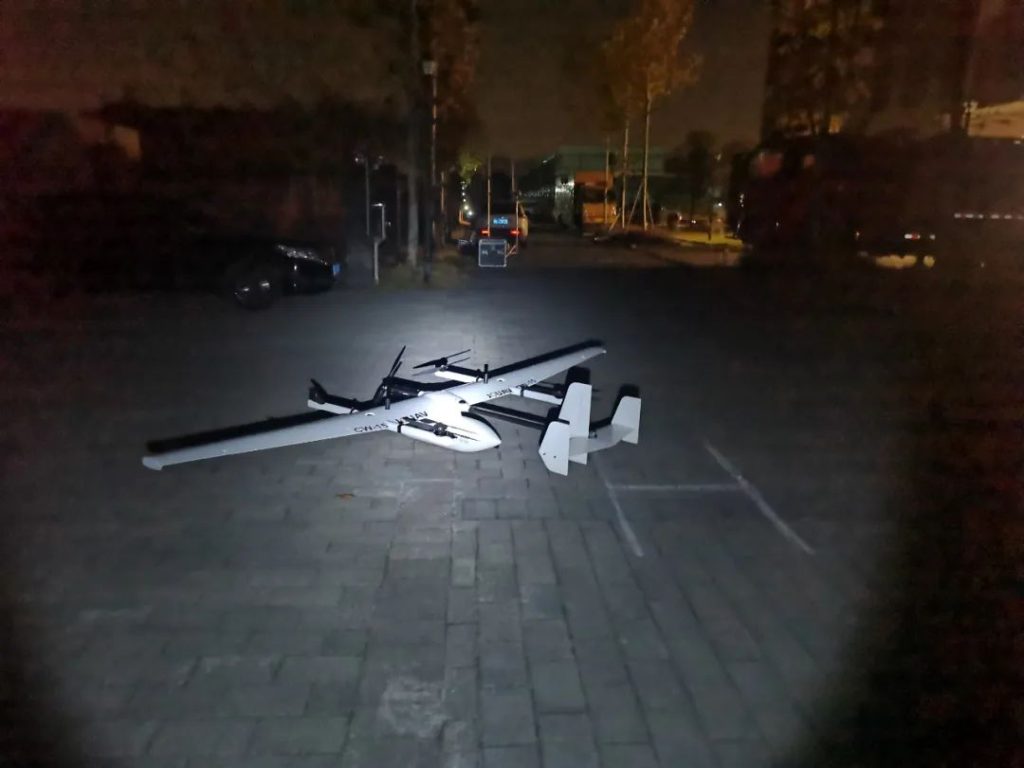
Aerial Drones
Aerial drones have revolutionized how firefighters approach emergency situations. These unmanned aerial vehicles (UAVs) play a crucial role in enhancing firefighting response and strategy, offering a bird’s-eye view that ground crews simply cannot achieve. Let’s explore what makes these drones indispensable in modern firefighting.
Key Features of Aerial Drones
Aerial drones are typically equipped with advanced technologies to assist firefighting operations. Here are some key features that make them effective tools:
- High-Resolution Cameras: Aerial drones are often outfitted with sophisticated cameras that provide clear images and video feeds from above. This allows incident commanders to monitor fire activity in real-time without having to risk human lives.
- Thermal Imaging: Many drones utilize thermal sensors that identify hot spots, even through smoke. In a firefighting operation, quickly locating these high-temperature areas can make a world of difference in directing resources where they are most needed.
- GPS and Mapping: Aerial drones often come with GPS capabilities that allow them to create detailed maps of affected areas, showing fire spread, topography, and other critical points of interest to ground crews.
Applications of Aerial Drones in Firefighting
Here are some key applications and benefits of using aerial drones:
- Pre-Fire Planning: Before a fire occurs, aerial drones can be deployed for reconnaissance missions, surveying areas to identify potential fire risks and gathering data for future firefighting strategies.
- Real-Time Monitoring: During an active fire, aerial drones provide live updates about the situation on the ground. This immediate feedback loop helps teams react quickly to changes in fire behavior.
- Post-Fire Assessment: Once a fire has been extinguished, drones can help analyze the aftermath by capturing footage of the affected areas, facilitating an understanding of the blaze’s impact. This data can be beneficial for future prevention efforts and resource allocation.
- Communication Relay: In remote areas where traditional communication methods falter, aerial drones can act as communication relays, ensuring that fireground teams maintain connectivity with command centers.
Personal Example
Imagine you’re in a command center watching a live feed from an aerial drone monitoring a wildfire that is encroaching upon residential properties. Thanks to the drone’s clear visuals and thermal imaging, you can see exactly where the flames are advancing. With this information, you can direct fire crews to prioritize areas that need immediate attention, possibly saving lives and homes!
Ground-Based Drones
While aerial drones take to the skies, ground-based drones offer a different perspective that can be equally beneficial—especially in scenarios where terrain is rugged or challenging to navigate. Ground-based drones, sometimes referred to as robotic drones, assist firefighters by enhancing capabilities at the fire scene itself.
Key Features of Ground-Based Drones
Ground-based drones often have specialized functions that make them valuable on the ground during firefighting operations. Here are a few notable characteristics:
- Autonomous Navigation: Many ground drones can navigate autonomously using predetermined paths or by employing obstacle detection systems. This makes them capable of moving through difficult terrains while conducting surveillance and data collection.
- Payload Capacity: Ground drones can carry various tools to assist in firefighting, such as small fire extinguishing systems, delivering water or fire retardants directly to the fire.
- Integrated Sensors: Similar to their aerial counterparts, ground-based drones often come equipped with various sensors that can detect gas leaks, temperature fluctuations, and hazardous material spills.
Applications of Ground-Based Drones in Firefighting
Ground drones play an essential role in supporting firefighting operations in several ways:
- Hazard Identification: Ground drones can roam through hazardous areas to assess the scene and identify dangers, such as collapsing structures or dangerous wildlife, thereby enabling crews to assess risks safely.
- Delivery Systems: In situations where access is challenging, ground drones can transport critical items, whether it’s fire-fighting foam or medical supplies to injured personnel.
- Search and Rescue: Ground drones equipped with cameras can assist in search and rescue operations, locating individuals trapped in hazardous conditions without endangering rescuers.
- Terrain Mapping: In unfamiliar or treacherous landscapes, these drones can create real-time maps to provide ground crews with updated information about terrain, thus helping them navigate tricky pathways safely.
Collaborative Example
Let’s consider a scenario where ground drones are deployed alongside aerial drones for an active wildfire situation. While aerial drones provide an overview of the fire’s extent, the ground drones can scout specific areas that are inaccessible or too dangerous for firefighters to approach directly. They could discover isolated hot spots or even spot missing individuals that need to be rescued. This teamwork illustrates how aerial and ground-based drones complement one another in firefighting efforts.
Conclusion
The integration of both aerial and ground-based drones into firefighting represents a transformative approach to emergency response. Each type of drone brings unique strengths to the table, enhancing situational awareness, increasing efficiency, and ultimately saving lives. As technology advances, the possibilities of drone applications will continue to expand. The combined utilization of aerial and ground drones can lead to safer firefighting practices and better outcomes in combatting fires. Ultimately, as both the aerial and ground-based drones mature in their capabilities, they will undoubtedly become integral to modern firefighting strategies, bridging the gap between technology and traditional methods to face a growing challenge head-on. Embracing these innovations is not just a trend; it’s the future of firefighting! 🚒✨
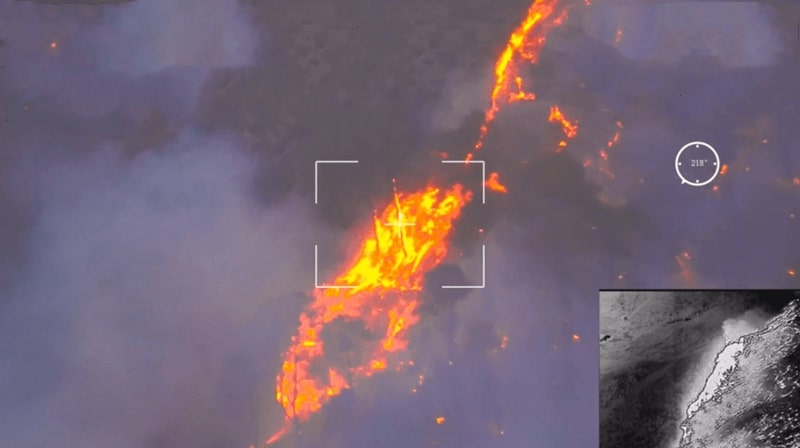
Wildfire Management
The use of drones in wildfire management has become a game-changer in recent years, offering innovative solutions to an age-old problem. With the increasing frequency of wildfires around the globe—driven by climate change and human activity—efficient management has never been more crucial. Drones provide tools and insights that make controlling and combating wildfires more effective.
Pre-Fire Surveillance
One of the biggest advantages of employing drones in wildfire management is their ability to conduct pre-fire surveillance. Utilizing drone technology, firefighters can gather critical data that supports proactive measures. Here’s how this works:
- Recce Missions: Drones can be flown over high-risk areas to detect potential fire hazards. They can identify dry vegetation, dead trees, or any other elements that might increase fire risk.
- Mapping Fire Behavior: Drones can create detailed maps using GPS data and thermal imaging to visualize how much terrain is available for firefighters to move through safely.
Active Fire Management
Once a wildfire has started, drone applications become even more vital:
- Real-Time Monitoring: Drones provide situational awareness by documenting how the fire is progressing. This information is crucial for incident commanders making tactical decisions in real time.
- Identifying Hot Spots: Drones with thermal imaging can detect hot spots that remain smoldering. This allows ground crews to focus their efforts on areas most at risk of flare-ups.
- Disaster Relief Coordination: Aerial drones can oversee vast areas of land, providing essential data that helps coordinate ground efforts more effectively, directing resources precisely where they are needed.
Personal Experience
Imagine being part of a fire management team battling a significant wildfire. The command center relies on outdated maps and verbal reports from field teams. Suddenly, a drone equipped with a thermal camera arrives, offering a live feed that reveals areas of fire not previously identified. This real-time intel allows you to redirect firefighting crews to hotspots that need immediate mitigation. Lives are saved, properties are protected—the drone has made a measurable difference!
Search and Rescue Operations
In addition to wildfire management, the versatile capabilities of drones also significantly impact search and rescue (SAR) operations. When lives are on the line, every second counts, and drones provide critical advantages in such tense situations.
Rapid Deployment
When an emergency occurs, such as a natural disaster or a person lost in a remote area, drones can be deployed almost instantly:
- Quick Access: Drones can reach areas that may be inaccessible to ground vehicles or where it’s too dangerous for rescuers. Their ability to cover large areas in a short time can vastly shorten the duration of search missions.
- High-Fidelity Imaging: Equipped with powerful cameras, drones can scan for signs of individuals or obstacles that may obstruct rescue efforts.
Real-Time Assessment
Another significant advantage of drones in SAR operations is their ability to provide real-time data, enabling coordinated efforts:
- Mapping Resources: Drones can map the area using GPS data while monitoring essential resources available to rescuers, including safe zones, catchment areas, or hospitals.
- Visual Communication: The live video feeds from drones allow command centers to communicate effectively with ground teams. This information helps manage logistics and determine the best approach for rescue operations.
Enhanced Safety for Rescuers
Safety is a paramount concern in search and rescue. Here are ways drones facilitate a safer working environment:
- Hazard Identification: Drones can scout ahead to spot potential dangers, such as unstable terrain or wildlife, allowing rescuers to avoid hazardous areas.
- Helping Hands: In certain operations, drones can even act as delivery systems for emergency supplies, such as water and medical kits, minimizing the number of personnel exposed to danger during high-risk operations.
Collaborative Example
Picture a remote mountain area where a hiker becomes lost during a sudden snowstorm. Ground crews are mobilized, yet the dangerous conditions and difficult terrain make it challenging to locate the individual quickly. Drones are employed to fly above the snow-covered landscape, equipped with high-resolution cameras and thermal sensors. As the drone scans the area, it detects a heat signature within a cave-like structure, indicating that the hiker has taken shelter. Commanders can swiftly direct ground teams to the location, potentially saving the individual from hypothermia or worse.
Conclusion
The applications of drones in firefighting and rescue operations highlight the incredible potential of this technology in high-stakes situations. From wildfire management to efficient search and rescue missions, drones act as force multipliers, enhancing both safety measures and response effectiveness. As environmental changes lead to more frequent wildfires and natural disasters, embracing drone technology is not just an option—it’s a necessity. The accuracy and speed with which drones provide critical data can dramatically alter the outcomes in emergencies, ultimately preserving lives and property. Harnessing the power of aerial and ground-based drones is a step toward a future in emergency management where technology and human effort work hand in hand. Understanding the implications of these innovations ensures that responders are equipped with the best tools available as they face the challenges of tomorrow. 🌍🚁
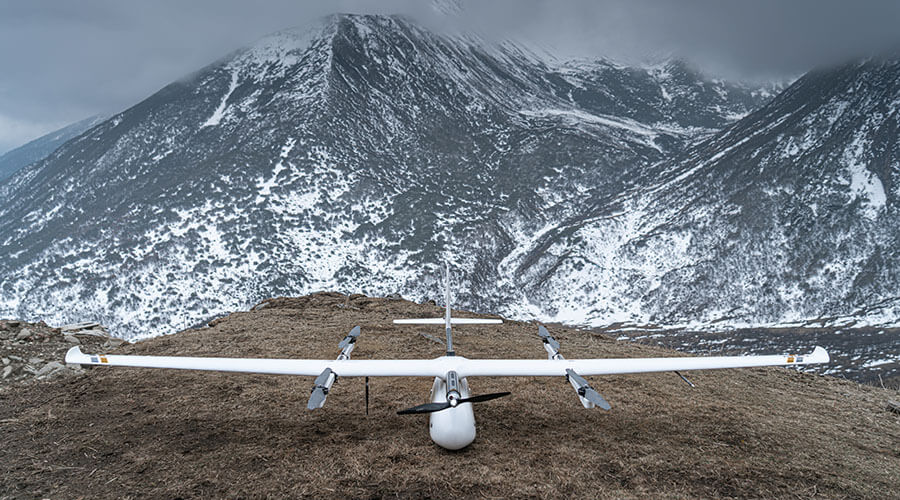
Challenges and Limitations of Drone Technology in Firefighting
While drones offer a range of innovative applications in firefighting and rescue missions, it’s essential to acknowledge that their use comes with challenges and limitations. Understanding these obstacles is critical for effective implementation and for maximizing the potential of drones in high-stakes situations. Let’s dive into some of these key challenges.
Regulatory Complexities
One of the most significant hurdles in deploying drone technology for firefighting is navigating the intricate web of regulatory requirements. Various rules govern the use of drones in different jurisdictions, which can complicate immediate responses.
- Airspace Restrictions: Firefighters must contend with no-fly zones, which can be established around emergency sites for safety reasons. Regulatory barriers can hinder the ability of drones to operate freely in areas where they are most needed.
- Licensing Requirements: Many countries require drone operators to possess specific licenses or certifications. These rules ensure safety and proper use; however, they can create bottlenecks in emergency situations where immediate information is essential.
Environmental Conditions
Firefighting occurs under extremely challenging conditions, often exacerbated by the environment. Drones, while versatile, are not immune to these external factors.
- Weather Limitations: Wind, rain, and extreme temperatures greatly affect drone performance. High winds can make flying hazardous, while rain can impair sensors, reducing visibility.
- Smoke and Visibility: In wildfires, smoke can obscure thermal imaging and aerial footage, significantly diminishing a drone’s usefulness. Although drones provide excellent ground-level views, when visibility is low, their functional value can be compromised.
Technical Constraints
Drones come with technical limitations that may affect their effectiveness in firefighting scenarios.
- Limited Flight Time: Most drones have a limited battery life that restricts their flight duration. For many drones, this time can range from 20 minutes to an hour, which may not be sufficient for extensive firefighting operations. Imagine processing real-time footage but needing to scramble to recharge the drone; that’s a loss of vital situational awareness!
- Payload Capacity: While some drones can deliver small payloads, the weight capacity is often limited. In firefighting, where larger quantities of water or fire retardants may be necessary, this poses a challenge, though some specialized drones are working to address this.
Infrastructure and Integration Challenges
Integrating drone technology into established firefighting operations can be more complex than it seems. Here are a few factors to consider:
- Lack of Standardization: Not all drones are created equal. Different models have various capabilities and requirements, leading to inconsistencies among firefighting outfits. Standardized protocols for deployment can help bridge this gap but may take time to develop.
- Technical Training for Firefighters: For drone technology to be effective, firefighters need adequate training to understand and operate the devices. Without proper educational programs, personnel might not leverage the full potential of drone technology.
Safety Concerns for Personnel
Even though drones are designed to reduce risks to firefighters, they can introduce additional safety concerns that must be managed effectively.
- Collision Risks: Operating multiple drones in the same airspace could lead to accidents if not appropriately monitored. Close coordination is vital to ensure that drone flights do not interfere with aerial firefighting aircraft or other emergency response teams.
- Data Reliability: In high-stakes firefighting scenarios, data accuracy is paramount. If drones malfunction or data transmission fails, decision-makers may receive misleading information, jeopardizing safety and response effectiveness.
Funding and Resource Allocation
While drones can be surprisingly cost-effective, the initial investment for acquiring drones and related technology can be significant in many budgets.
- Initial Costs: The price of high-quality drones, along with the necessary equipment and training, can stretch the budgets of some fire departments. Consequently, limited funding can hinder the deployment of this valuable technology.
- Maintenance Costs: Beyond the initial investment, require maintenance and regular updates to remain operational. This ongoing expenditure can further strain already tight budgets, particularly for smaller or rural departments.
Personal Anecdote
Let’s say you’re part of a firefighting unit that has just received drones as part of your operation. Initially, you’re excited about the prospects for better situational awareness. However, during a wildfire outbreak, your team discovers that high winds are affecting drone stability, grounding your aerial assets. The excitement quickly turns to frustration as you realize that the drones can’t provide the support you’d hoped for in the midst of the blaze. It’s a humbling reminder of the importance of understanding both the benefits and limitations of this technology!
Conclusion
As we navigate the complexities of drone technology in firefighting, it’s vital to recognize both the advantages and the challenges that accompany their integration. While drones offer unprecedented benefits in terms of situational awareness and operational efficiency, their limitations call for careful consideration and planning. Fire departments must work proactively to address regulatory hurdles, environmental constraints, and technical limitations to optimize the use of drones effectively. By providing adequate training and resources, fostering open communication, and developing standard protocols, firefighting teams can harness the full potential of drone technology. In the ever-evolving landscape of firefighting, it’s clear that drones represent a leap forward—but they aren’t a panacea. Understanding and addressing their challenges will be critical for shaping a future where drones play a vital role in safeguarding lives and properties amidst the challenges that fires present. Together, we can forge a path toward more resilient firefighting strategies, combining human ingenuity with cutting-edge technology to meet the challenges of tomorrow! 🌟🚒
